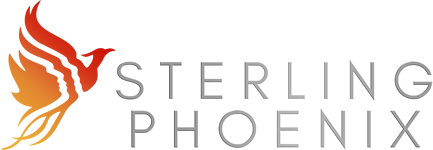Summary
You’re not lazy. You’re not broken. You’re exhausted from holding up a version of yourself that looks successful—but quietly feels like it’s slipping away.
Welcome to the unspoken epidemic in enterprise leadership: high-functioning burnout. We don’t talk about it because, on paper, you’re still crushing it. You show up. You deliver. You’re the one people depend on when things get messy.
But behind closed doors? You’re running on caffeine, calendar hacks, and a quiet sense of panic you’ve trained yourself to ignore.
Burnout Doesn’t Always Look Broken
Let’s kill the myth now: burnout is not always sobbing in the stairwell or rage-quitting on Slack.
Sometimes burnout looks like this:
- Responding to emails at 2 AM… because your brain won’t shut off.
- Delivering high-impact work while secretly fantasizing about walking away from it all.
- Winning awards and promotions while feeling emptier by the day.
- Having no time to think, no space to breathe, and no real clarity about what you’re even building anymore.
That’s not performance. That’s hiding.
And in enterprise culture, it’s rampant.
The Mask of “I’ve Got This”
We built entire industries around this persona:
The leader who can take anything, absorb everything, and never crack.
The “go-to” person. The fixer. The calm-in-the-storm executive.
But here’s what no one says out loud:
The calm is often dissociation.
The productivity is often perfectionism.
The over-functioning? Survival mode with a polished filter.
We call it resilience. But really—it’s refined avoidance.
The Hidden Costs (That Are No Longer Hidden)
Let’s be real. High-performance hiding is expensive. Here’s what it’s quietly costing you:
- Clarity:
Your best decisions used to come from grounded intuition and bold thinking.
Now? You can’t hear your own thoughts above the noise. - Credibility:
People can feel when you’re “off.”
They just don’t say it. They lose trust subtly—by looping you out of bold moves or treating you like a task machine instead of a strategic thinker. - Creativity:
Innovation dies in overdrive.
You can’t disrupt when you’re stuck in protect-and-defend mode. - Connection:
At work, you’re less inspiring.
At home, you’re emotionally MIA.
You’re “there” for everyone—except yourself. - Your Future:
You didn’t build your career to become a reactive, exhausted version of yourself.
But unless something shifts, that’s where this story ends: successful on the outside, unfulfilled and fragmented inside.
That is not the legacy you signed up for.
So Why Do Smart Leaders Hide It?
Because the system taught us that visibility is risk.
Because being the one who “needs a break” feels like failure.
Because the bar is already brutal—and there’s no permission to step back without losing momentum (or respect).
And because we confuse being needed with being valued.
Read that again.
The Pattern I See—And The Shift That Breaks It
When leaders come to me—clients, colleagues, peers—they don’t say, “I’m burnt out.”
They say things like:
- “I’ve lost my edge.”
- “Everything feels harder than it should.”
- “I used to love this work, but now I’m numb.”
- “I feel stuck, but I don’t know what I need.”
Here’s the truth behind those words: They’ve been stuck in high-performance hiding for too long. And the strategy that once made them unstoppable… is now silently unraveling them. But once they see the pattern, the shift begins.
It starts with this question:
What would you build if you weren’t trying to prove, earn, or hold everything together anymore?
That’s where recovery begins.
Not with rest (though rest is sacred).
Not with a sabbatical (though I’ll cheer for that too).
But with reclaiming your clarity.
With confronting the truth of how you’re operating—without shame.
With choosing to lead from congruence, not just competence.
That’s the work. And yes—it will piss off the systems that benefit from your silence. But that’s how revolutions begin.
What Now?
If this post hits too close to home, I’m not here to sell you hustle hacks or “self-care Sundays.”
You don’t need another checklist.
You need a recalibration.
A plan to rewire how you lead, live, and make decisions from the inside out.
That’s why I built the Burnout Recovery Toolkit—because leaders like you don’t need more noise. You need real tools for real change. Not someday. Now.
Before You Go
You don’t need to fall apart to justify rebuilding.
You don’t need a crisis to change your story.
You don’t need to keep performing a version of success that costs you everything.
You just need the courage to stop hiding—and start building something sustainable, significant, and true.
Let’s do it together.
—
Ready to unmask your own high-performance hiding?
Download the Burnout Recovery Quickstart Kit and start reconnecting with the leader you were always meant to be.

